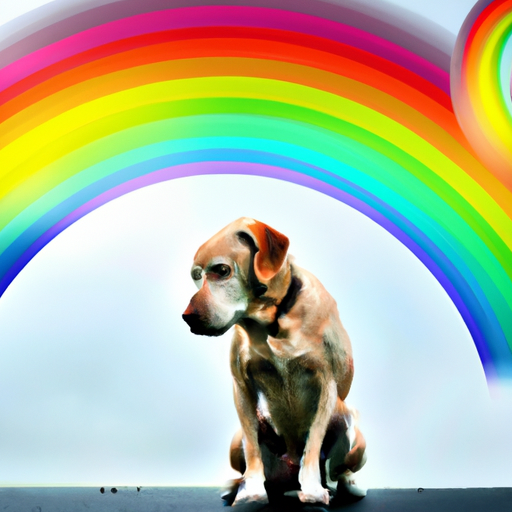Introduction
You might think color is a trivial detail in your dog’s life, but understanding what colors your dog can and cannot see can greatly enhance their quality of life. The question “What are dogs’ favorite colors?” may seem like an odd one, but it’s a topic worth exploring as it can facilitate better communication and a deeper bond between you and your furry friend.
Understanding Canine Vision
Dogs, unlike humans, don’t see the world in a rainbow of colors. They have a dichromatic vision which means they can only perceive two primary colors: blue and yellow. This doesn’t mean they see the world in just these two colors but rather, they see a range of tones between these colors.
Here’s a handy table to illustrate the difference between human and canine color perception:
| Human Colors | Dog Equivalent |
|---|---|
| Red | Dark Brown |
| Orange | Dark Yellow |
| Yellow | Yellow |
| Green | Yellow |
| Blue | Blue |
| Purple | Blue |
The Importance of Color in Training and Play
Knowing that dogs can see blue and yellow can be helpful in choosing toys and training aids. If you’ve been tossing a red ball in the grass and wondering why Fido can’t find it, now you know why!
Consider these tips when buying dog supplies:
- Choose toys in blue and yellow to make them more visible to your dog.
- Avoid using red or green toys, especially on grassy areas.
- Use color contrast to make commands more comprehensible.
Color Preferences in Dogs
While it’s difficult to say definitively what a dog’s favorite color is, studies suggest that dogs seem to prefer blue and yellow over other colors. This is likely because these colors are more vivid to them and easier to distinguish. So, if you want to catch your dog’s attention, you might want to go for a bright blue or yellow toy.
The Impact of Color on Dogs’ Behavior
Colors can have a profound effect on a dog’s mood and behavior. For example, a yellow room can stimulate excitement while a blue room can have a calming effect. Similarly, a dog may be more likely to approach a stranger wearing blue or yellow clothes. Therefore, understanding color perception can aid in creating a comfortable environment for your dog.
FAQ
Q: Can dogs see in the dark?
A: Yes, dogs have better night vision than humans due to a special structure in their eyes.
Q: Are there colorblind dogs?
A: All dogs are essentially colorblind compared to humans. They see fewer colors and less saturation.
Q: Do colors affect dogs’ moods?
A: While there’s no definitive evidence, some studies suggest certain colors, like blue, can have a calming effect.
Q: Which color toy should I buy for my dog?
A: Preferably blue or yellow, as these colors are easier for dogs to see.
Q: Can dogs see TV?
A: Yes, but they likely perceive the images differently due to their color vision.
Through understanding how your dog perceives the world, you can make more informed choices to enhance their well-being and happiness. So next time you’re selecting a toy or considering a new blanket for their bed, remember, for dogs, it’s all about blue and yellow.



